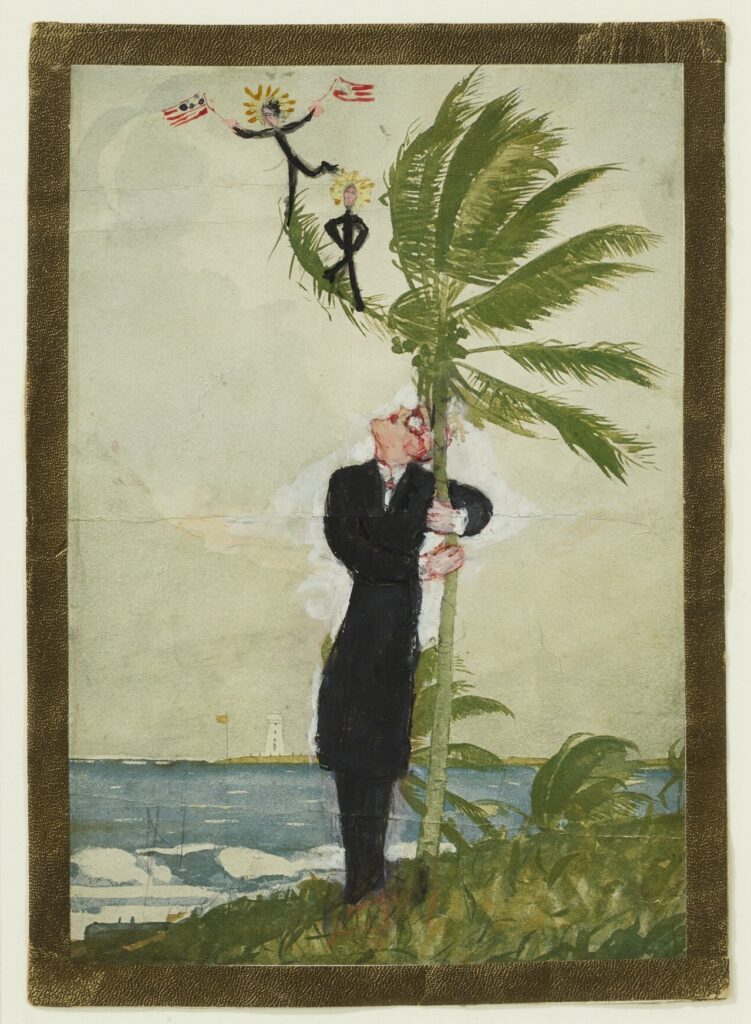
I’ve been trying and failing to make sense of this weird little Florine Stettheimer portrait of the art critic Henry McBride. It is one of two Stettheimers being sold this month at Christie’s by the heirs of Joseph Solomon, who executed Stettheimer and her sisters’ wills, and placed most of her artworks and papers in public collections. Except these two?
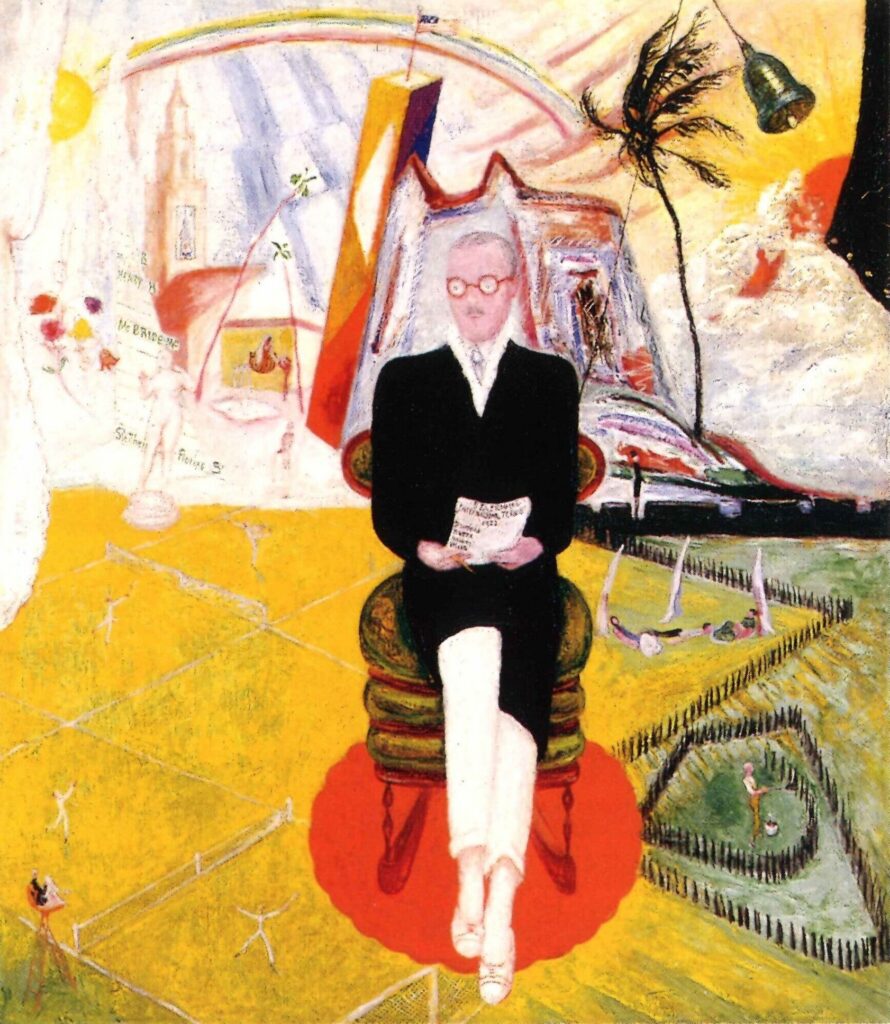
Though it seems clear enough for a paragraph in Stettheimer’s biography, this object is defying my understanding of it on multiple levels. McBride was a leading art critic who became friends with Stettheimer. This is the second of three portraits she painted of him. The first, from 1922, also includes Winslow Homer’s Palm Tree, Nassau in the corner. The third, Cathedral of Art (1942) also includes McBride waving flags. [Though the first time, he’s waving American flags; in the second, he’s either gatekeeping or directing traffic at the bottom of the Met’s grand staircase.]
This portrait, dated 1924, is painted over and around a color reproduction of Homer’s painting, which is itself mounted on a board. McBride is hugging the main palm tree while standing in front of another; Stettheimer blotted out the fronds around McBride’s upturned head. Two little figures, one with two flags, are on the Homer tree. Are they both McBride, or just the flagwaver? Then who’s the other one?
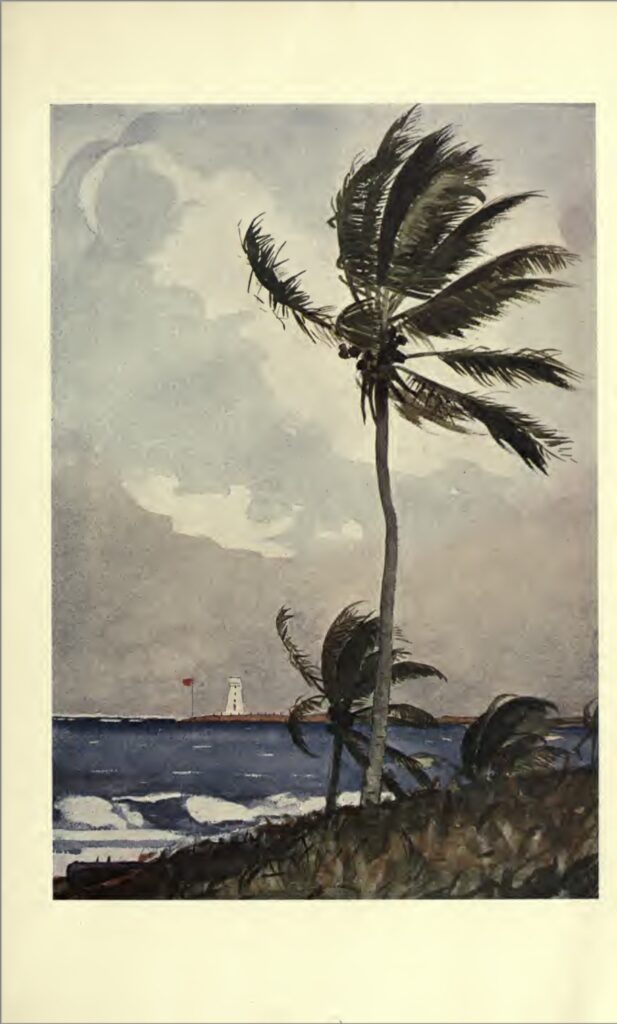
But why this tree? Why this painting? Where’s this print from? The Christie’s lot essay quotes Barbara Bloemink’s description of the first portrait, which doesn’t explain anything that’s not already visible. It also quotes a letter where McBride describes the 1922 portrait to Robert MacAdam: “Up above, in the sky and elsewhere, were references to my aesthetic preoccupations, such as the celebrated palm-tree watercolor by Winslow Homer…”
What form did McBride’s aesthetic preoccupation take that Florine Stettheimer made Homer’s palm tree his repeated trademark? This is not a rhetorical question. I’ve searched the archives of The Sun, where McBride started writing about art in 1913—beginning, auspiciously enough, with The Armory Show—and found nothing. He certainly made Homer references, and held the watercolors in very high esteem, but that was nothing new or unusual. Homer had famously only shown watercolors at the 1901 Pan-American Exposition in Buffalo. On the artist’s death in 1910, the Met mounted a memorial show, and got first pick at that stash of c. 1898-99 West Indies watercolors, which he’d long refused to sell. They took twelve, of which Palm Tree, Nassau is the starkest. So maybe it’s aged the best, or looked the most prescient/modern.
But this was all before McBride even started writing. Why, twelve years later, was this 25-yo picture such a fixation for him, yet he didn’t write about it? Was this perhaps a topic of conversation, something McBride became known for bringing up as a litmus test whenever discussing new art? Where did Stettheimer get this print? From the museum? The color is brighter than both the original and other reproductions at the time. Did she paint on reproductions of other paintings often? Or just this once?
And last of all, why did Stettheimer give this to Solomon? McBride was the first critic to mention Stettheimer’s work; his review was basically a request for an invitation to the world of art parties Stettheimer kept depicting. And yet this seemingly gifty portrait ended up with her lawyer instead.
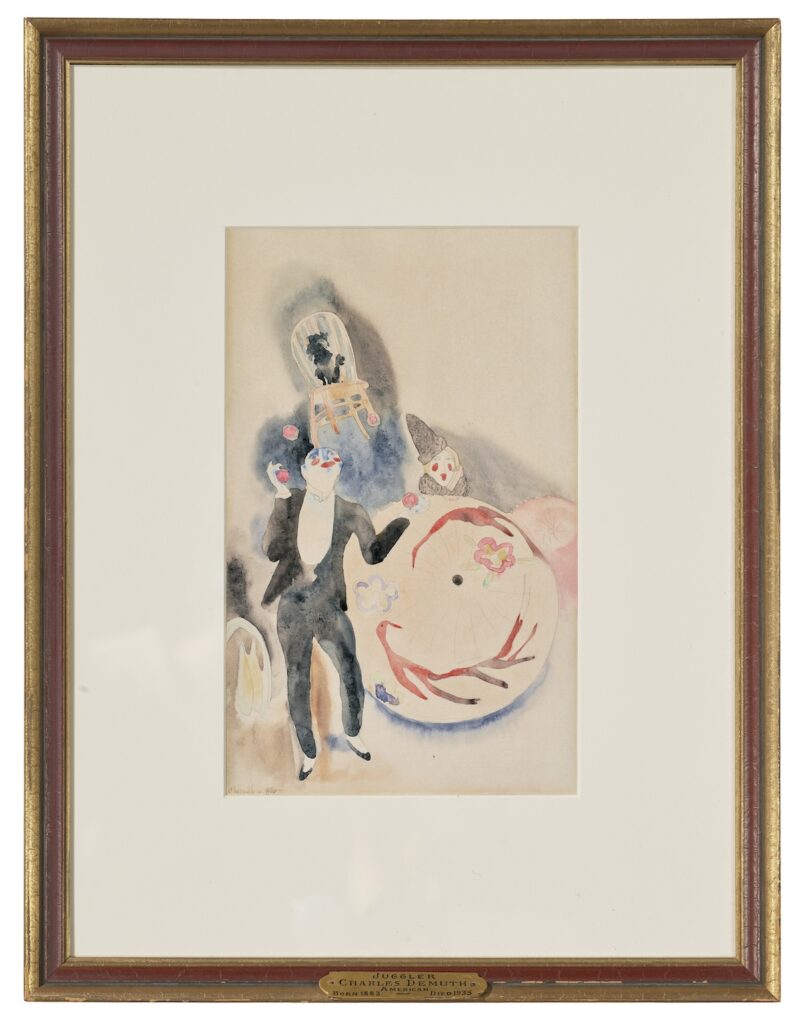
The best I can figure is Solomon thought this Stettheimer would go nicely with the 1916 Demuth watercolor of a juggler he acquired from Carl Van Vechten at some point. It’s similarly sized, framed the same, and also features a guy in a suit in the midst of mayhem looking up at some oddity. Don’t break up a set!
If you buy it, or figure anything out about it, lmk.
[Next day update: you know who else loved a palm tree? Florine Stettheimer. Her set design for the 1934 production of the Gertrude Stein/Virgil Thomson opera, Four Saints in Three Acts featured a pair of Homeric palm trees.]
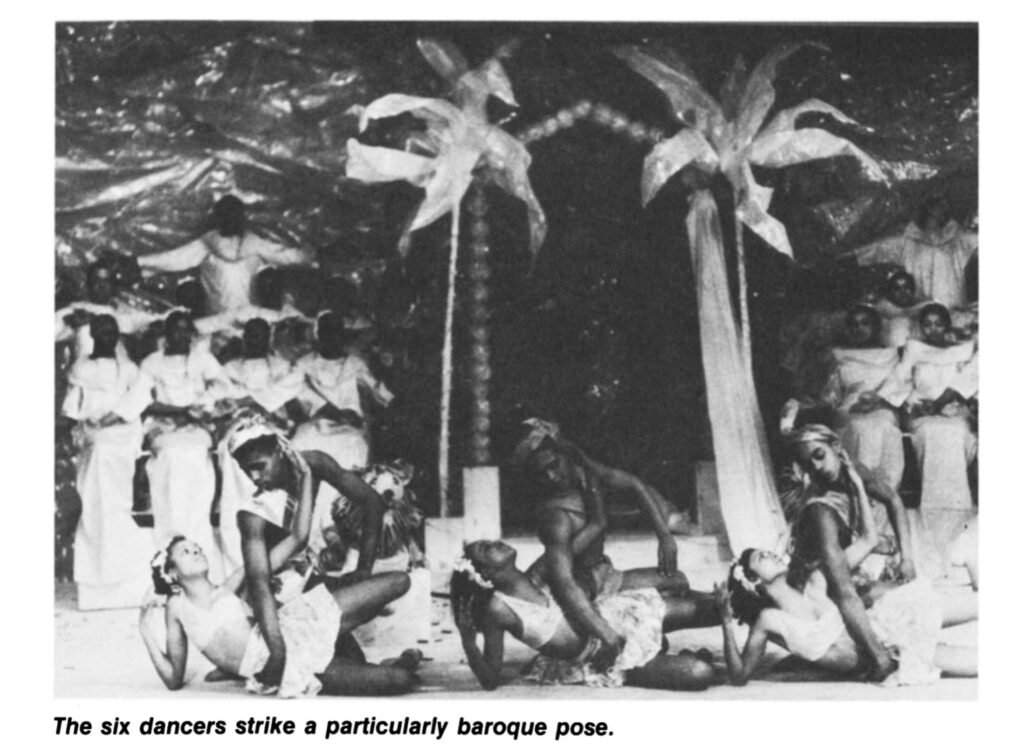
18 Apr 2024, Lot 35, Florine Stettheimer, Henry McBride on Winslow Homer, c. 1924, est. $40-60,000 [update: sold for $90,720] [christies]
